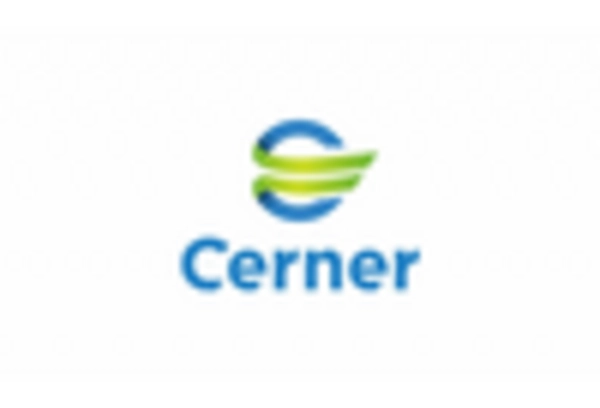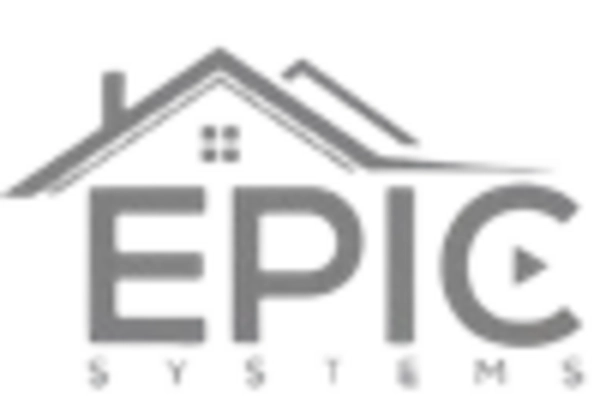Rising Demand for Telehealth Services
The increasing demand for telehealth services is a pivotal driver for the Medical Scheduling Software Market. As healthcare providers expand their telehealth offerings, the need for efficient scheduling solutions becomes paramount. In 2025, it is estimated that telehealth services will account for a substantial portion of patient consultations, necessitating robust scheduling software to manage appointments effectively. This trend indicates a shift in patient preferences towards remote consultations, which in turn drives the adoption of medical scheduling software that can seamlessly integrate with telehealth platforms. The ability to schedule virtual appointments alongside in-person visits enhances operational efficiency and patient satisfaction, thereby propelling the growth of the Medical Scheduling Software Market.
Growing Emphasis on Patient-Centric Care
The shift towards patient-centric care is a crucial driver for the Medical Scheduling Software Market. As healthcare providers aim to enhance patient experiences, the need for intuitive scheduling solutions that prioritize patient preferences becomes evident. In 2025, it is anticipated that a significant percentage of patients will prefer online scheduling options, reflecting a broader trend towards digital engagement in healthcare. This demand for user-friendly interfaces and personalized scheduling options compels software developers to innovate continuously. Consequently, the Medical Scheduling Software Market is likely to witness an influx of solutions designed to cater to the evolving expectations of patients, thereby driving market growth.
Increased Focus on Operational Efficiency
Healthcare organizations are increasingly prioritizing operational efficiency, which serves as a significant driver for the Medical Scheduling Software Market. By streamlining appointment scheduling processes, healthcare providers can reduce wait times and optimize resource allocation. In 2025, it is projected that organizations utilizing advanced scheduling software will experience a notable decrease in administrative costs, potentially by up to 20%. This efficiency not only improves patient flow but also enhances the overall patient experience. As healthcare systems strive to deliver high-quality care while managing costs, the demand for sophisticated scheduling solutions that can integrate with existing systems is likely to rise, further fueling the growth of the Medical Scheduling Software Market.
Technological Advancements in Healthcare IT
Technological advancements in healthcare IT are transforming the Medical Scheduling Software Market. Innovations such as cloud computing, mobile applications, and data analytics are enhancing the capabilities of scheduling software. In 2025, it is expected that a majority of healthcare organizations will adopt cloud-based scheduling solutions, allowing for greater flexibility and accessibility. These advancements enable real-time updates and improved communication between patients and providers, which are essential for effective scheduling. As technology continues to evolve, the Medical Scheduling Software Market is poised for significant growth, driven by the demand for more sophisticated and integrated scheduling solutions.
Regulatory Changes and Compliance Requirements
Regulatory changes and compliance requirements are increasingly influencing the Medical Scheduling Software Market. As healthcare regulations evolve, organizations must ensure that their scheduling systems comply with new standards. In 2025, it is projected that compliance-related costs will rise, prompting healthcare providers to invest in scheduling software that meets these requirements. This necessity for compliance not only drives the adoption of advanced scheduling solutions but also encourages software developers to enhance their offerings to align with regulatory standards. Consequently, the Medical Scheduling Software Market is likely to experience growth as organizations seek to mitigate compliance risks through effective scheduling solutions.


















Leave a Comment